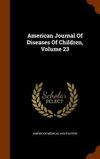Origins of cerebral palsy.
引用次数: 89
Abstract
Analyses were undertaken to determine the causes of cerebral palsy in a prospective study of 43,437 full-term children. Presumed causes were found for about 71% of the 34 quadriplegic and 40% of the 116 nonquadriplegic patients with cerebral palsy. Risk estimates based on predictive models, adjusted for multiple factors, suggest that 53% of the quadriplegic patients with cerebral palsy could be attributed to congenital disorders, 14% to birth asphyxia, and 8% to other identified disorders. Thirty-five percent of the nonquadriplegic patients with cerebral palsy could be attributed to congenital disorders and 6% to other disorders. In the victims of cerebral palsy, characteristic consequences of birth asphyxia were more often the result of nonasphyxial disorders. These included meconium in the amniotic fluid, low 10-minute Apgar scores, neonatal apnea spells, seizures, persisting neurologic abnormalities, and slow head growth after birth.脑瘫的起源。
对43,437名足月儿童进行了前瞻性研究,以确定脑瘫的病因。在34名四肢瘫痪的脑瘫患者和116名非四肢瘫痪的脑瘫患者中,分别有71%和40%的人找到了可能的病因。基于预测模型并根据多种因素进行调整的风险估计表明,53%的四肢瘫痪脑瘫患者可归因于先天性疾病,14%归因于出生窒息,8%归因于其他已确定的疾病。35%的非四肢瘫痪脑瘫患者可归因于先天性疾病,6%归因于其他疾病。在脑瘫患者中,出生窒息的特征性后果更多是由非窒息性疾病引起的。这些包括羊水中的胎粪,10分钟Apgar评分低,新生儿呼吸暂停,癫痫发作,持续的神经异常,出生后头部生长缓慢。
本文章由计算机程序翻译,如有差异,请以英文原文为准。
求助全文
约1分钟内获得全文
求助全文

 求助内容:
求助内容: 应助结果提醒方式:
应助结果提醒方式:


